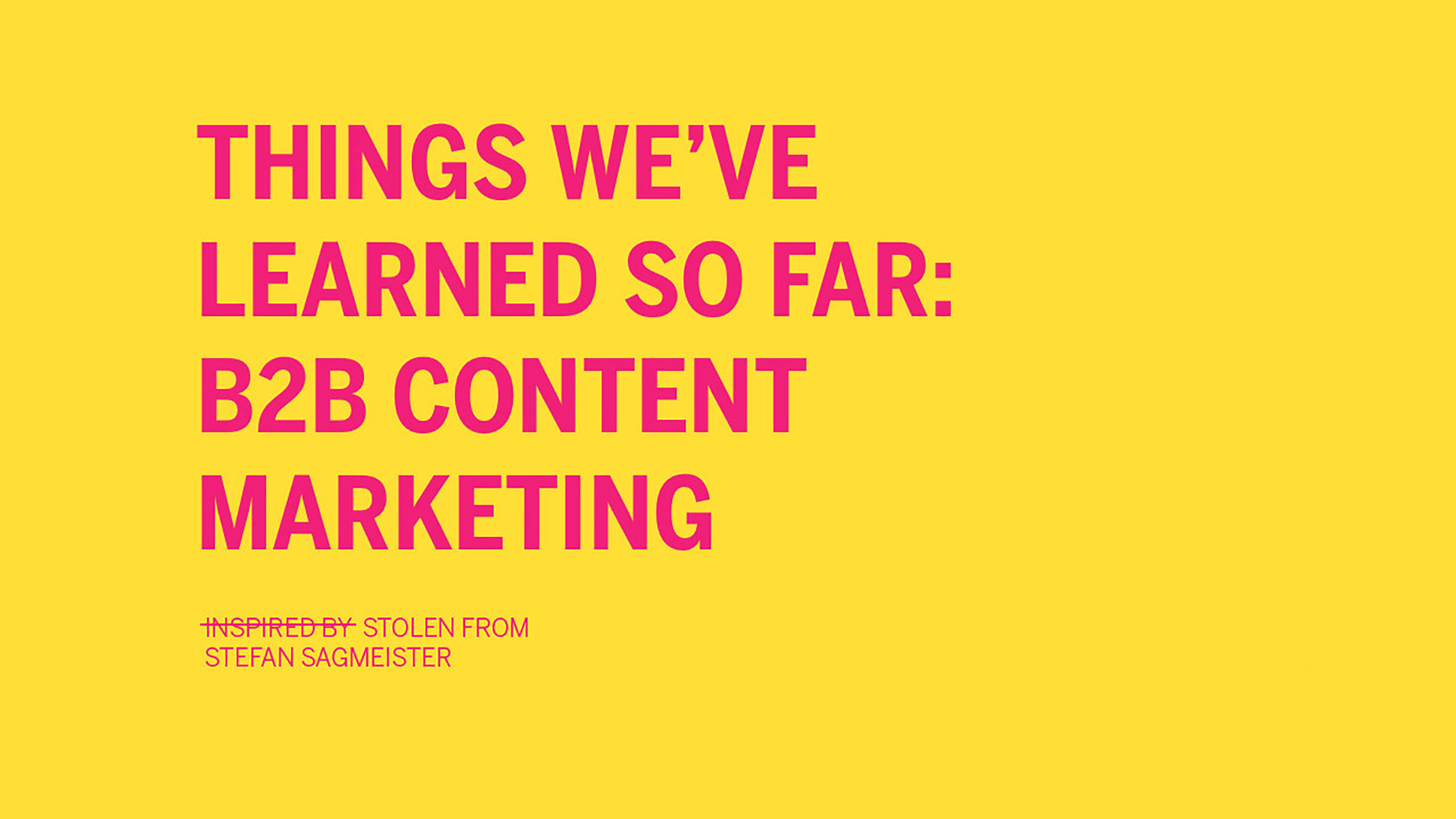Things We’ve Learned: B2B Content Marketing
B2B content marketing plays an important role in our company.
It started as a tactic we used in our own marketing—publishing weekly blogs, daily social media posts, monthly emails, and occasional ebooks, guides and videos. Eventually, our clients started asking if we would help with their content strategy and production as well. A couple years ago, we launched the Atomicdust Digital Marketing Program, with content marketing at its core.

We recently hosted an event focused entirely on B2B content marketing, called, appropriate, Things We’ve Learned: B2B Content Marketing. Atomicdust Partner/Creative Director Mike Spakowski and I shared real-life lessons we’d learned over the years, including tips for getting started, creating high-quality content and connecting with audiences.
Read a recap of our presentation below.
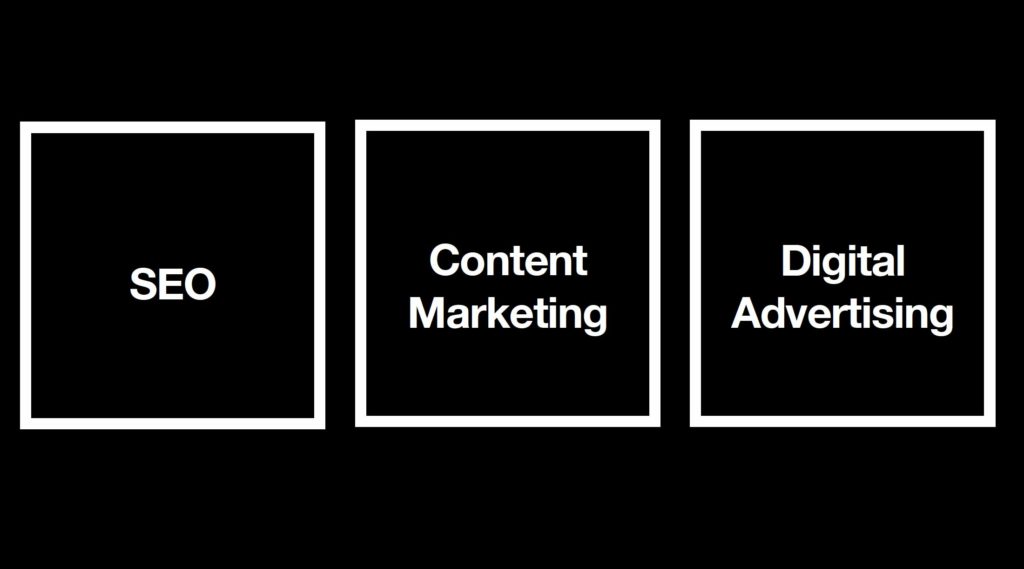
The digital marketing trifecta.
When we formalized the Atomicdust Digital Marketing Program, we divided our services into three main buckets: SEO, content marketing and digital advertising.
But if you ask me, the content marketing bucket is the key to success because it feeds the other categories as well. Having fresh content on your website gives search engines something to deliver in search results and drives organic traffic to your website. Content marketing also gives companies something to promote through paid ads, driving traffic and supporting lead generation.
But what is content marketing?
Before we really dive in, though, I want to define exactly what content marketing is. Essentially, content marketing is creating and sharing valuable material with an audience to support a brand’s goals. But there’s debate about what’s content marketing and what’s not. So, what is considered content?
Common content marketing pieces include blog posts, ebooks, case studies, videos, social media posts, email marketing and white papers. But content marketing also includes infographics, downloadable templates, presentation decks, events, print collateral and more.
But why is content marketing important for B2B companies specifically?
Why is a content marketing strategy important for B2B?
Of course, B2C brands can benefit from content marketing, too. But we’ve found content marketing to be incredibly effective for B2B companies for a few reasons.
First, B2B companies often have long sales cycles—think six to 12 months, or even longer. Valuable content pieces give companies a way to keep audiences engaged throughout the marketing funnel, from the awareness stage down to the conversion stage. Content marketing also reassures current customers that they’re using the right partner.
Another challenge B2B marketers face is convincing multiple audiences. When Atomicdust meets with a prospective client, we might talk with the Director of Marketing, the VP of Business Development and the CEO—and they all have to sign off on hiring us. Knowing that, we can create content that addresses each of those unique roles, their pain points and goals, so they’ll feel comfortable choosing us as their marketing agency.
Finally, content marketing supports brand awareness and reputation. It tells people about your company, provides value and supports strong brand positioning. So while someone might not be ready to buy today, content marketing solidifies a company’s reputation so that when prospects are ready to take the next steps, they’ll think of your brand.
With all that in mind, let’s talk about some things we’ve learned about B2B content marketing.
The audience is everything.
The philosophy behind content marking boils down to this: If you help your target audience, your brand will prosper. But before you can help someone, you need to know what they need.
Companies will often skip this step and just start creating content about whatever they want. But a successful content marketing strategy considers the audience and their needs before anything else.
Atomicdust uses audience personas—documents that list job titles, goals, challenges and more. We have names for the various personas, and when we’re trying to create relevant content, we ask ourselves what they would think about what we’re creating and if they would find it valuable.

Your company is a publication.
To be successful with your content marketing efforts, you have to start thinking of your company like a publication. In other words, you have to operate like you’re a publication whose business will suffer if it stops putting out content.
There’s a Warren Buffet quote that’s a great analogy for content marketing: “Somebody is sitting in the shade today because of a seed someone planted a long time ago.” If you closed this tab right now and wrote a blog post or recorded a video and published it, I would bet nothing would happen. You might get some likes or shares, but you probably wouldn’t get any sales leads. Content marketing is a long game. You’re planting the seeds today and sitting in the shade down the road.
Atomicdust is a fully inbound agency, meaning we don’t have sales teams. All our leads come to us. And the leads that come to us today are because of content we created six months, a year or even several years ago. As a publication, remember that content creation should be done on an ongoing basis.
Part of being a publication is devoting the resources needed to create that content. You’ll need to allocate staff, time or budget to make your content work. Writers and marketers create the bulk of Atomicdust’s content pieces, but designers, developers and account managers also contribute, because that’s how important content marketing is to our business.
There’s just one small problem.

No one wants to write.
Let me explain.
I started my career as a journalist. I’d been writing professionally for almost a decade when I joined Atomicdust. But when I wrote my first blog post here, about how the best marketing doesn’t feel like marketing, I was terrified to share it with Mike because I thought he would hate it and regret hiring me.
The people on your team will probably feel the same way. Imposter syndrome is very real, and few people identify as experts. But whether they realize it or not, everyone on your team is an expert and everyone has the capability of being a thought leader in their industry. That’s why we say no one wants to write or create content—because most of the time they think they can’t, or it won’t be good enough or people will hate it.
The trick is just to start doing it.
Start writing, or recording videos or designing infographics—whatever content you want to make, just start making it and putting it out there.
When I turned in that blog to Mike, he had no changes. And it’s still one of our highest-ranking blogs, driving a considerable amount of traffic to our site every month.
But I was convinced my ideas and advice from that blog were so obvious and dumb… which is how I learned my next lesson.
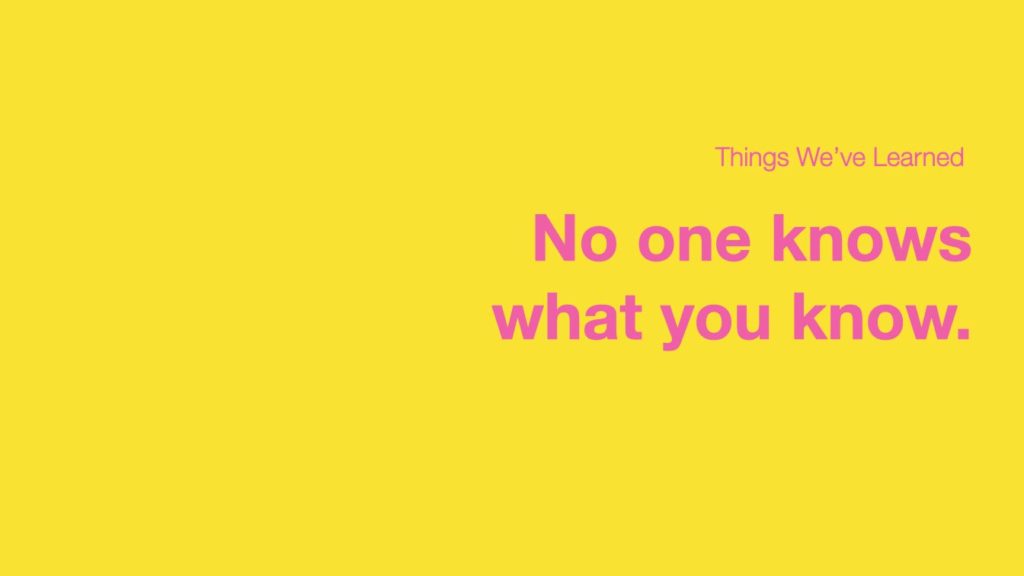
No one knows what you know.
In other words, a lot of times what holds us back from creating content is the thought that we don’t have anything new to say.
I read a book recently called Made to Stick, which breaks down the factors that make ideas sticky—in other words, memorable, repeatable, shareable. The book looks at why urban legends are successful and what makes one ad campaign fail while another is referenced for decades. The authors talk about what they call the Curse of Knowledge. Basically, once we know something, it’s difficult for us to imagine what it was like not knowing it. We are “cursed” by the knowledge.
As you create your content, remember that you have the Curse of Knowledge. Instead, put yourself in your audience’s shoes and think about what they don’t know. Not sure where to start? Make a list of 10 topics you know a lot about, or are pretty good at. Voila. You’ve got 10 content ideas to get started with.

Tell a story.
The next lesson we’ve learned is to tell a story.
Donald Miller’s book, Building a Storybrand, breaks down how almost all stories have the same elements in common. One is the hero, someone who wants to achieve something. The hero meets a guide, someone or something that gives the hero the tools, knowledge or confidence to achieve it.
While a lot of companies tell stories, they get the hero and the guide wrong. You’re not the hero of your story, you’re the guide. The audience is the hero. (This commercial from 1998 is a great example of a company using the hero-guide concept correctly.)
In the stories you tell in your content marketing pieces, you need to be the guide. Your customers need to be the hero.

Different gets remembered.
What I mean by “Different gets remembered” is probably pretty obvious, but if something is boring, people don’t remember it.
A lot of B2B companies lose sight of the fact that even though they’re selling to businesses, those businesses are made of people. And people like to be surprised and entertained.
But what does “different” mean? It depends on your industry and competitors. If your competitors are all using ebooks and no one is publishing videos, incorporating video into your content marketing can be the way to stand out. Maybe “different” just means talking about projects in a unique way, framing case studies like big adventures or starting a podcast series that invites clients and prospective customers to talk about their experiences.
But while standing out is important, there is such a thing as too different.
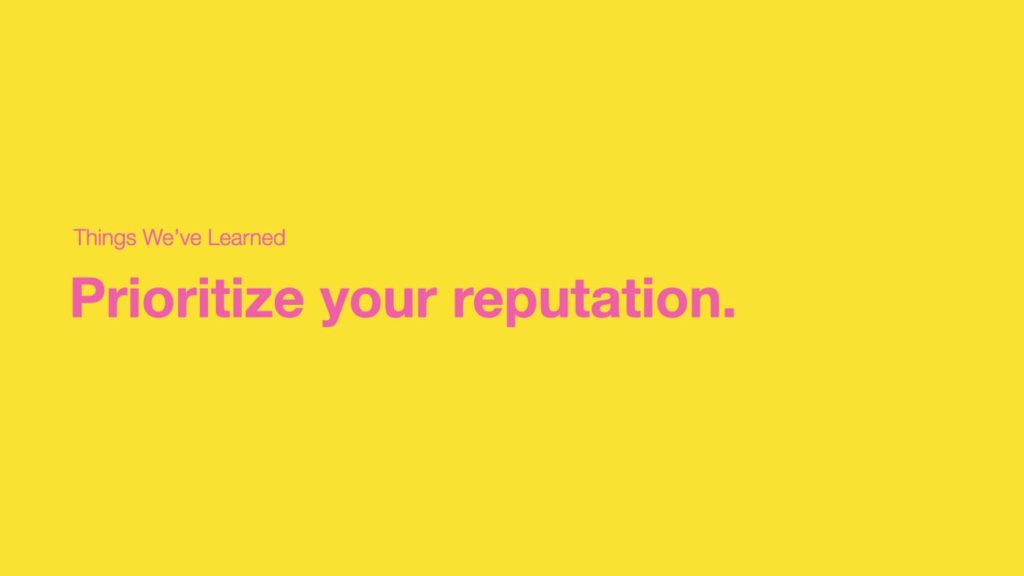
Prioritize your reputation.
About a year ago, I was working from home when I got a text from Mike. It was a slow day at the office, and he’d recorded a video. He’d sent it to me to watch because he was going to post it on the Atomicdust Instagram. (For time’s sake, I’ll just say it was a ridiculous video involving a giant old industrial fan we have in the office. If you want to watch it, it’s in the event video at the end of this post.)
So there I was, sitting on my couch feeling really stuck. Ridiculous videos get reactions and engagement on social, and I knew that video would get people talking. And as a company, we have a reputation for being laid back, authentic and kinda weird creative people. But we also have some pretty buttoned-up clients. And we want to work with huge companies that might see that video, and be really turned off.
So it was difficult, but I had to text Mike back and say that I didn’t think we should post it. I was worried it would do more harm than good. It might have received a lot of traction on social media, but you have to think about how content will reflect on your brand and influence your reputation. So while I’ve learned to do things that are different, I’ve also learned how to discern when we need to prioritize our reputation.

Get to the point.
For a lot of people, sounding smart means using a lot of words, or including every example, idea or statistic they can think of. They’ll write 500 words when they could have said the same thing in 100—and it backfires because people have short attention spans.
So here are three tips for getting to the point:
-Make it shorter. Get rid of anything that doesn’t add value.
-Use the inverted pyramid to share vital information at the beginning, and less important information later in the content.
-Use questions, cliff hangers, surprises, jokes—whatever devices are needed to keep people interested.
Remember: Content that’s boring is content that’s worthless. If it’s not going to be enjoyed—or remembered—then it’s not effective.

SEO is in the details.
I’ve learned that a lot of SEO, or search engine optimization, is in the details.
SEO, of course, is all about making sure that when someone searches for something on Google, your company is what they find.
Here’s how I think about SEO: People ask Google questions. Google serves them the content that best answers their questions.
So, to be successful with SEO, you have to:
1. Answer people’s questions
2. Make it easy for Google’s robots to understand and serve your content
Making your content easy for Google’s robots to understand and include in search results is all about the details, like header tags, alt text, the URL slug and meta description. Make sure to include the keyword you’re targeting in each of these places whenever possible, and you’ll be halfway to the first page of Google.
Tools are vital to a successful SEO strategy. Google Analytics, Google Search Console and Google Keyword Planner are all free tools that can help you get started. And tools like Ahref and Moz have both free and paid keyword research tools to take your marketing strategies even further. We also use tools like Surfer SEO to ensure the content we create will rank well in search results.
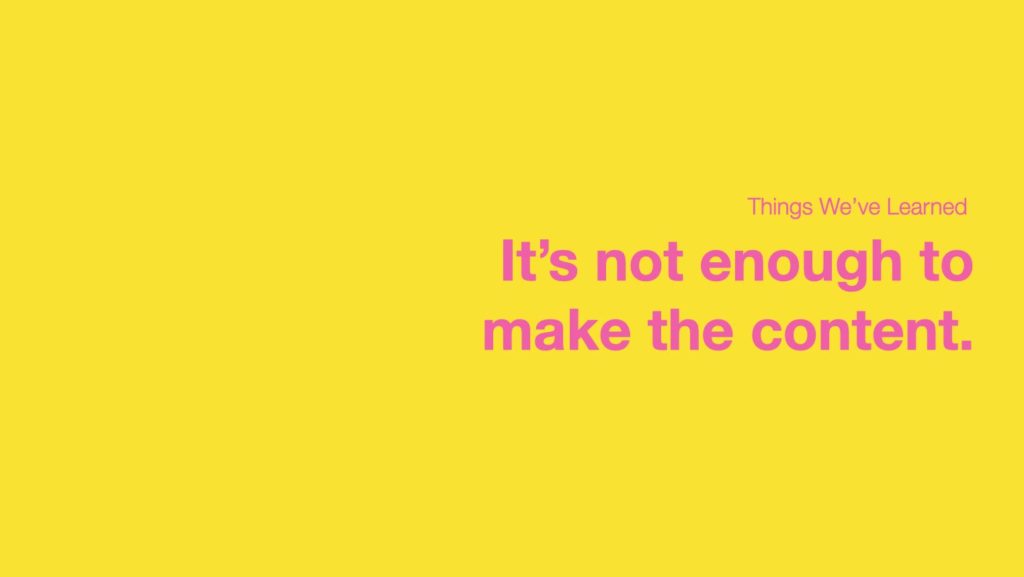
It’s not enough to make the content.
Here’s where a lot of B2B companies fail at content marketing.
Let me ask you a question. If a tree falls in the forest, and no one posts about it on Instagram, did it even make a sound?
Once you make content, you need to share it with your audiences, wherever they are.
The best social media platforms for B2B companies:
Depending on your product or service, where you share your content will vary. But we recommend starting with social media channels (particularly LinkedIn, although Facebook, Instagram, Twitter and even TikTok could all work), as well as your email marketing.
You should also encourage employees to share the content on their own social media accounts: according to Social Media Today, the same piece of content gets eight times as much engagement when it’s shared by employees than when it’s shared on an official company channel.
And don’t just share content once. You can create an evergreen piece of content and post about it every six to 12 months for YEARS as long as it’s still a valuable piece of content.

Use your clients to create content.
The work you do for your clients can be the inspiration for your content. If you are helping someone out, then you can write case studies, make videos or record podcasts about what you did and what the outcomes were. Author and artist Austin Kleon wrote, “Do good work and share it.” Your marketing strategy can be as simple as that. Just do good work for clients and share that work to get more clients.
And going back to the very first thing we learned, every piece of content you create should be created with clients in mind. If you want to create something that will be helpful, just ask your clients. Ask what they need help with, what challenges they have at work or what they don’t have time for. You can even ask lost sales why they chose a competitor over you. They might share that they were confused or had hesitations—then you can create content that can prevent any confusion or calm those fears for the next person who is considering hiring your team.
Content creation is all about helping. And if you can help someone, you can succeed.
To recap:
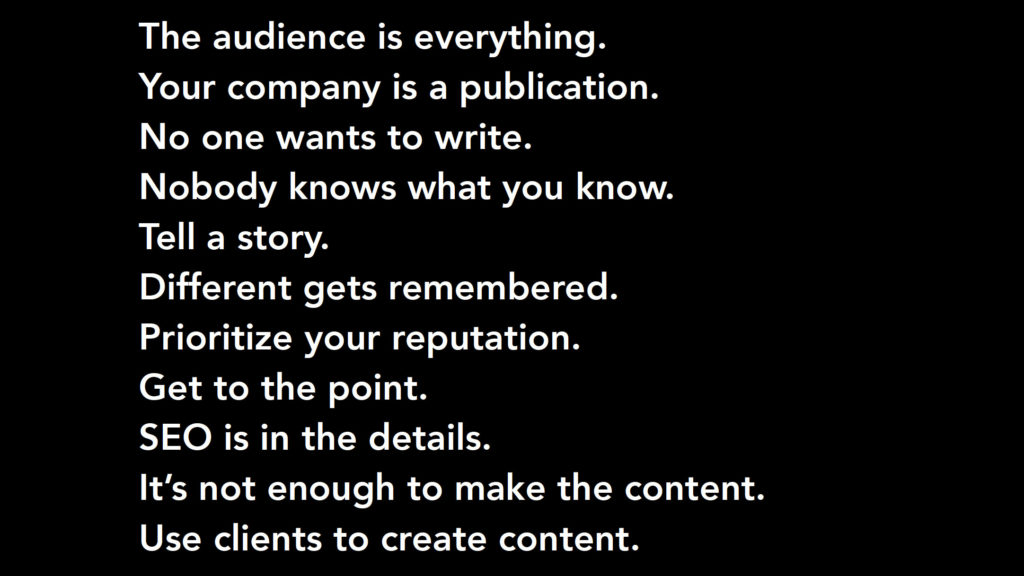
Want to see the actual presentation? Watch it here.
